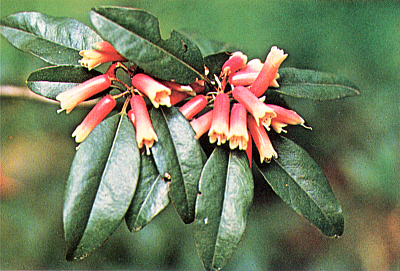QBARS - v28n1 Rhododendron keysii, RSF No. 64.130
Rhododendron keysii R.S.F. # 64.130
P. H. Brydon

|
|
R. keysii
Photo by P. H. Brydon |
The illustration was taken on May 1st, 1972 in the Rhododendron Species garden at Salem, Oregon. The plant, propagated from the Caerhays form, was severely cut back after the sub-zero weather of December, 1972 but has since recovered and is now almost back to its original size. This species was introduced in 1851 from Bhutan where it grows at an altitude of 10,000 ft. It seems quite hardy in the milder parts of the British Isles and, with the exception of our unusually severe winters of 1960 and 1972 would appear to be hardy along the Pacific Coast, although it was reported killed in the Seattle area during the abrupt November freeze in 1955.
The largest plant I have seen was in Cornwall where it had attained a height of over 12 feet. As a young plant, R. keysii does not impress one with its show of flowers but, as the plant matures, it can be quite attractive either as an espaliered shrub against a sheltered wall or as a free standing plant, provided it has been kept pruned when young to develop a sturdy framework of primary branches. The tubular flowers, carried in clusters of from five to six are about one inch long and reminiscent of Correa (the Australian fuchsia). Its most celebrated hybrid is R. 'Minterne Cinnkeys' which has up to 30 pendulous flowers, in color much like the picture on page 34. This hybrid received the F.C.C. in 1952 and is a cross between R. cinnabarinum and R. keysii .
